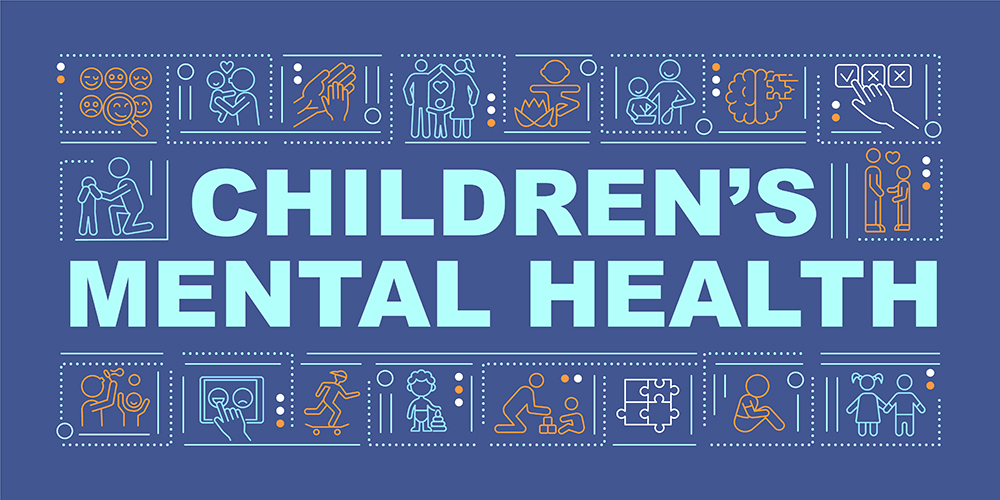The American Academy of Pediatrics (AAP), American Academy of Children and Adolescent Psychiatry (AACAP), and Children’s Hospital Association (CHA) declared a national state of emergency in child and adolescent mental health Tuesday, citing the COVID-19 pandemic as a driving force behind the growing concerns.
According to a joint statement from the groups, rates of childhood mental health concerns and suicide rose steadily between 2010 and 2020 with suicide being the second leading cause of death for youth ages 10-24 in 2018. The groups also cite a dramatic increase in emergency department visits for all mental health emergencies, including suspected suicide attempts.
Research from the Centers for Disease Control and Prevention (CDC) found between March and Oct. 2020, emergency department visits for mental health emergencies rose by 24% for children ages 5-11 and 31% for children ages 12-17. Additionally, emergency department visits for suspected suicide attempts increased nearly 51% among girls ages 12-17 in early 2021 compared to the same period in 2019.
The groups also cite the ongoing fight for racial justice as another factor behind the growing number of mental health crises among children, and indicate that inequities resulting from structural racism have led to the pandemic disproportionately affecting children from communities of color.
“The pandemic has struck at the safety and stability of families. More than 140,000 children in the United States lost a primary and/or secondary caregiver, with youth of color disproportionately impacted,” the statement continues. “We are caring for young people with soaring rates of depression, anxiety, trauma, loneliness, and suicidality that will have lasting impacts on them, their families, and their communities.”
The groups are calling on policymakers and children/adolescent advocates to push for the following:
- Increase federal funding dedicated to ensuring all families and children can access evidence-based mental health services
- Improve access to telemedicine
- Support effective models of school-based mental health care
- Accelerate the integration of mental health care in primary care pediatrics
- Strengthen efforts to reduce the risk of suicide in children and adolescents through prevention programs
- Address the ongoing challenges of the acute care needs of children and adolescents, including shortage of beds and emergency room boarding
- Fully fund community-based systems of care that connect families to evidence-based interventions
- Promote and pay for trauma-informed care services
- Address workforce challenges, including recruiting underrepresented populations into mental health professions, to give all children access to mental health services
- Advance policies that ensure compliance with mental health parity laws
Hospitals across the country are echoing the groups’ concerns and working to improve mental health supports for children and adolescents they serve.
“The number of children being referred for outpatient services is increasing almost every week. We’ve had weeks with 250 children being referred to our outpatient mental health services,” Dr. Mary Margaret Gleason, vice chief of Children’s Hospital of The King’s Daughters Mental Health Program in Norfolk, told WAVY. “We need to make sure children aren’t sitting in the emergency room waiting for those life-saving services.”
One solution CHKD has come up with in the last year is the implementation of group therapy sessions, allowing for more patients to be seen without increasing the number of doctors or administrators.
AAP’s Ohio chapter has established the Store It Safe (SIS) Teen Suicide Prevention Program, a partnership of healthcare providers, firearm safety experts, and community organizations established to keep teens safe from suicide by firearms.
“Suicide is the second leading cause of death among 10 to 34-year olds in this country and the pandemic has only intensified this crisis,” said Mike Gittelman, MD, FAAP, Co-Medical Director of the SIS Program. “Through the Store it Safe Suicide Prevention Program our goal is to put a barrier between contemplation and action and increase the knowledge of healthcare providers and parents to reverse this fatal trend.”
If you or a loved one are struggling with suicidal thoughts, please call the National Suicide Prevention Lifeline at 800-273-8255, text TALK to 741741 or visit SpeakingOfSuicide.com/resources for additional information.













